NYC’s Forgotten ‘War on Christmas Trees’
Discover how an obscure holiday crackdown affects festive street vendors today!



Image via Whitney Museum by Ed Lederman ©2016
The Whitney Museum has become well-known for its latest location in the Meatpacking, a new building designed by architect Renzo Piano. But the history of the Whitney goes back to the end of the Roaring ’20s, and has moved several times in Manhattan. Here are ten secrets and fun facts of the Whitney Museum, which include an appearance by Arnold Schwarznegger on display on a turntable:
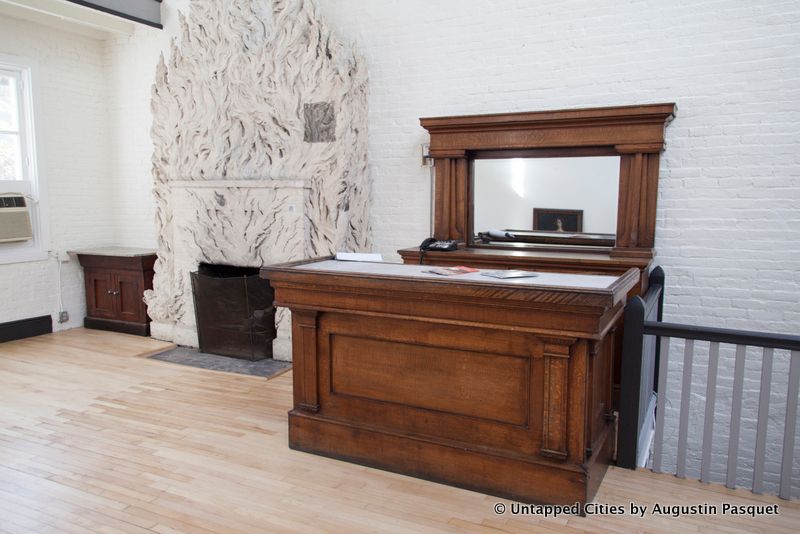
Gertrude Vanderbilt Whitney was the oldest daughter of Cornelius Vanderbilt II who started the New York Central Railroad, built Grand Central Terminal, and was known for his over-the-top French chateau mansion on Fifth Avenue and 57th Street. The Whitney studio was originally a carriage house, built in 1877 on West 8th Street. It was converted in 1907 and in 1918 Whitney commissioned her friend and American artist Robert Winthrop Chanler to design the space. Today, it’s one of the few remaining examples of 20th century decorative art still in place.
According to the National Trust for Historic Preservation, which named the Whitney Studio a National Treasure in 2014, Whitney’s work to showcase American art at the studio spurred the modern art movement in the United States, and in 1929 the space became the original site of the Whitney Museum of American Art. Today, the Whitney Studio is owned and operated by the New York Studio School (NYSS).
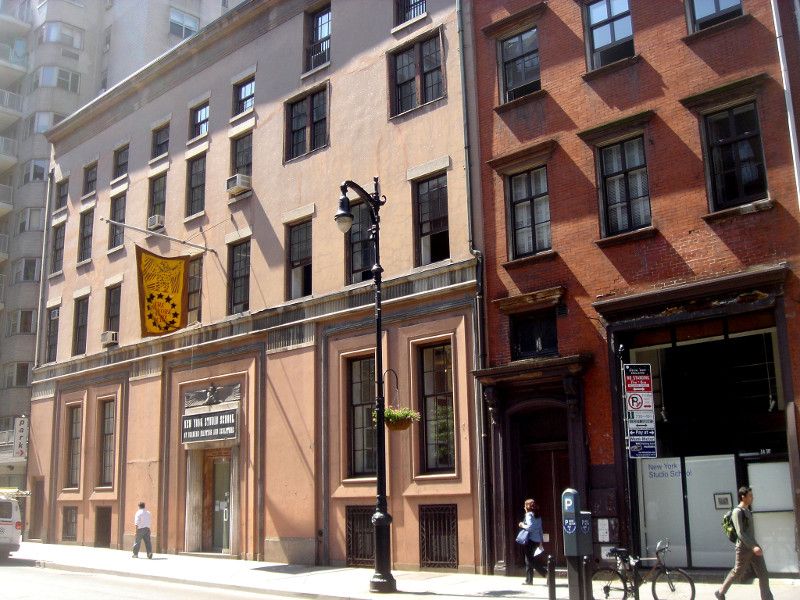 Whitney Studio. Photo from New York Studio School. The original sign of the museum, on the building that now houses the New York Studio School of Drawing, Painting, and Sculpture.
Whitney Studio. Photo from New York Studio School. The original sign of the museum, on the building that now houses the New York Studio School of Drawing, Painting, and Sculpture.
In August 2015, the city’s art aficionados were treated to an unexpected visit from the past. The original facade of the West 8th Street location of the Whitney Museum was visible for just a few days while the New York Studio School refurbished its own sign that hung over the door. It was the probably the first time in 48 years that the original engraving “Whitney Museum of American Art” was visible at this location. The cast-iron eagle and fluted columns have always been uncovered.
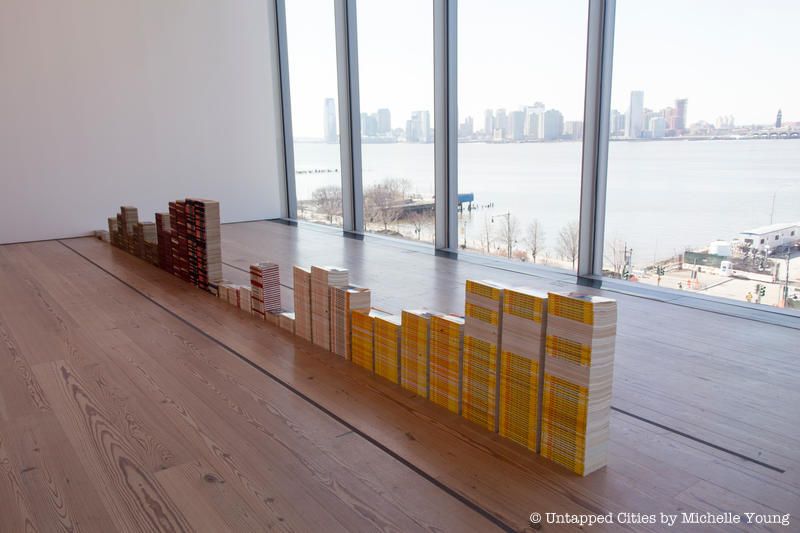
As a museum of American art, the Whitney exhibits 20th-century and contemporary art, but is more specifically focused on those by living American artists. The Museum consistently purchases works within a year of their making, many times before the artists has even reached notable fame.
In the beginning of the 20th century, many American artists found it difficult to pursue their professions. Their experimental ideas made exhibiting and selling near impossible in the United States. Gertrude Vanderbilt Whitney, a sculptor in her own right, was an advocate for the living American artists and created the Whitney Studio in Greenwich Village to support the work.
In 1929, after amassing a collection of over 500 works, she offered it with an endowment to the Metropolitan Museum of Art, who refused to show it. So instead, she took those works and in 1931, opened the Whitney Museum of American Art in the studio West 8th Street in Greenwich Village.
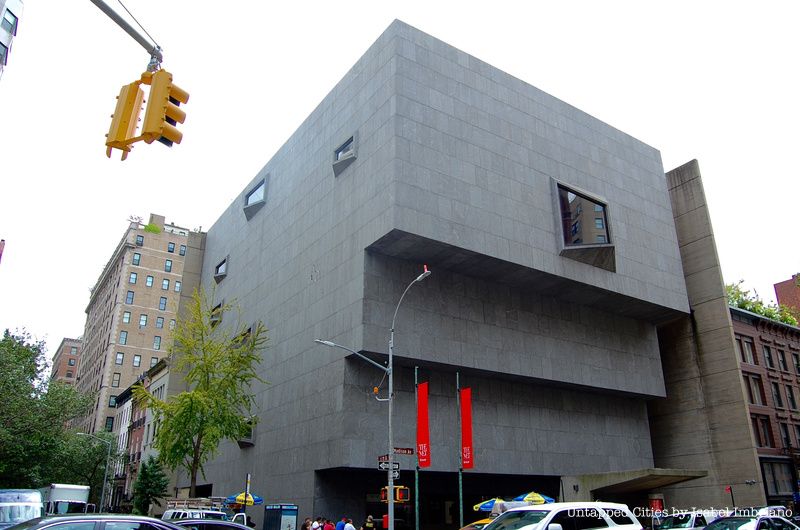
The Marcel Breuer-designed Whitney Museum, now The Met Breuer
The studio, which opened in 1914 at West 8th Street in Manhattan’s Greenwich Village was the first location of the Museum, which opened in 1931. In 1954, the Whitney needed more space and moved to a new location at West 54th Street, behind the Museum of Modern Art. A fire at the MoMA killed one person in 1958 and forced the museum to move many of its staff artwork into the upper floors of the Whitney, spurring the decision to find a new permanent location.
The museum then purchased the building on Madison Ave and 75th Street, designed by Marcel Breuer, and reopened there in 1966. Today, the Whitney is located in its new building designed by Renzo Piano located by the Hudson River at 99 Gansevoort Street. It moved out of its Upper East Side location on October 20, 2014 and reopened in the Meatpacking District on May 1, 2015.
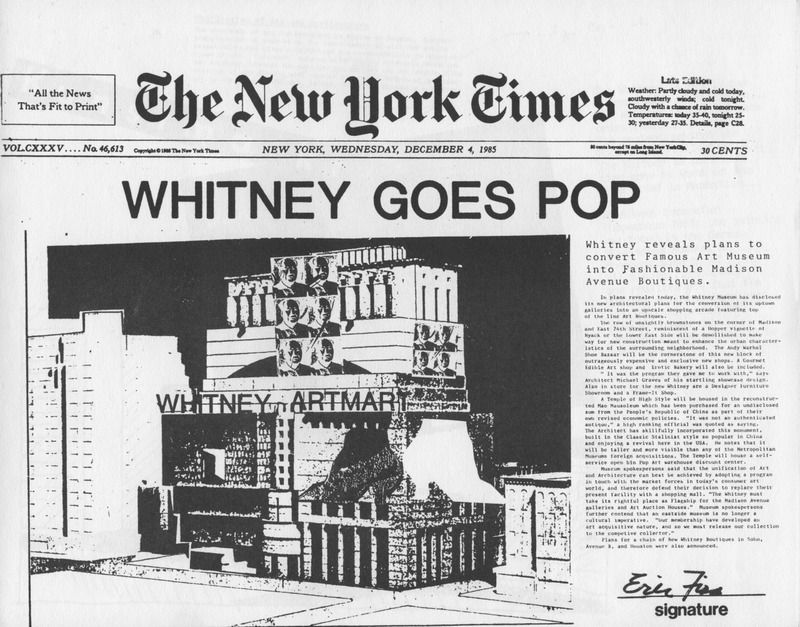 Before Whitney submission by Eric Fiss (New York, NY), 1985. “Whitney Goes Pop”. Courtesy Storefront for Art and Architecture.
Before Whitney submission by Eric Fiss (New York, NY), 1985. “Whitney Goes Pop”. Courtesy Storefront for Art and Architecture.
In 1985, the Whitney Museum for American Art proposed a 10-story, $37.5 million building to serve as an addition to the museum. Designed by Michael Graves, the expansion was intended to give the Whitney the space to comprehensively display 20th century American art, with specific galleries dedicated to artists such as Edward Hopper, Georgia O’Keeffe, and Alexander Calder. The design was immediately divisive, causing debate largely over the relationship between Graves’ proposal and the existing Breuer building.
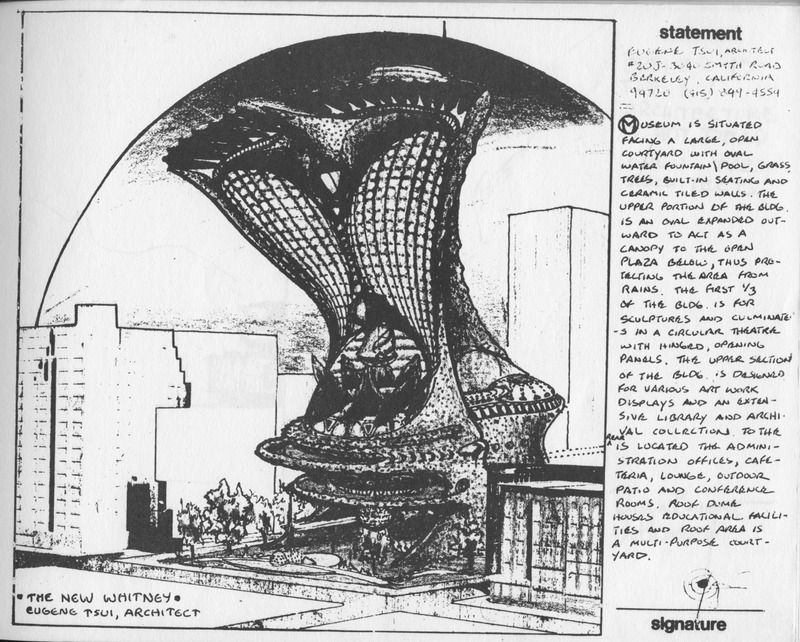 Submission by Eugene Tsui (Berkeley, CA), 1985. “The New Whitney”. Courtesy Storefront for Art and Architecture.
Submission by Eugene Tsui (Berkeley, CA), 1985. “The New Whitney”. Courtesy Storefront for Art and Architecture.
Six months after the Whitney announced the expansion plans, Storefront for Art and Architecture held Before Whitney, an exhibition of alternative designs.
The above text is from a previous article written for Untapped Cities by Storefront, where you can see more renderings of this competition.

590 Madison Avenue was once a satellite museum, and still showcases modern art in the corporate lobby
The first satellite Whitney Museum opened in 1973 at 55 Water Street downtown, in a space leased for $1 a year to the museum by the building owner Harold Uris. The satellite moved to a Philip Morris building on Park Avenue in 1983, and later that decade satellite museums opened in the lobbies of the I.B.M. Building at 590 Madison Avenue, the 2 Federal Reserve Plaza downtown, the Equitable Life Insurance Building at 787 Seventh Avenue. At the opening of the latter in 1986, the New York Times wrote that “the museum has now wedded its future to corporations,” and warned of the influence of such corporations on commissioned works.
Outside of New York City, there was a satellite exhibition space in the Champion International Corporation headquarters in Stamford, Connecticut, which closed in 2001 due to shortage of funds and support. These satellite branches were truly such, in the sense that each had its own museum director.
In 1976, there was an exhibit at the Whitney entitled “Articulate Muscle The Body As Art,” which showcased bodybuilders live, flexing for the audience while rotating on a turntable. A panel of prominent art critics made running commentary. The star of the show was a 28-year-old Arnold Schwarzenegger, who had the nickname “The Austrian Oak.”
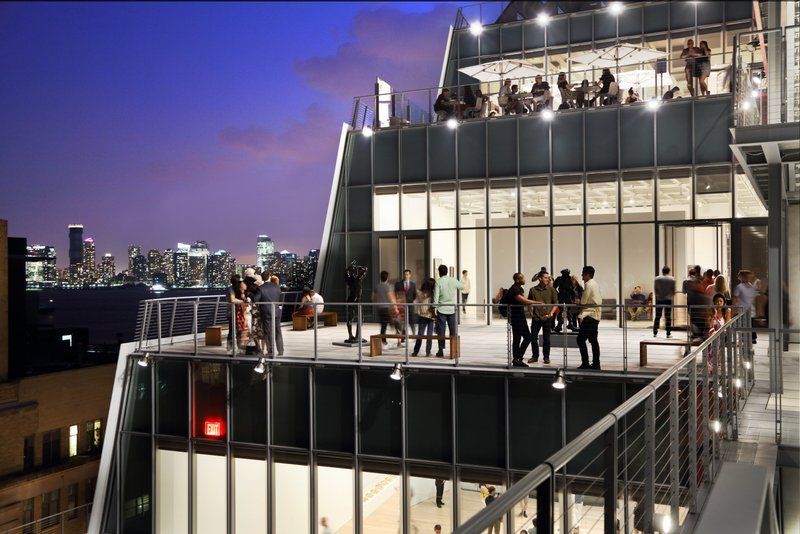
View of the Whitney’s terrace at night. Photograph by Ed Lederman ©2016 via Whitney Museum.
The Whitney has varying levels of membership available to for every kind of person from donor to student. Nevertheless, there is always an entrance fee for the Whitney. However, if you are lucky enough to be an artist featured in the museum’s permanent collection, you get a Lifetime Membership card, which allows the cardholder to enter the museum for free anytime for, well, the rest of their life. A great recognition by the museum of the hard work artists put into their work.
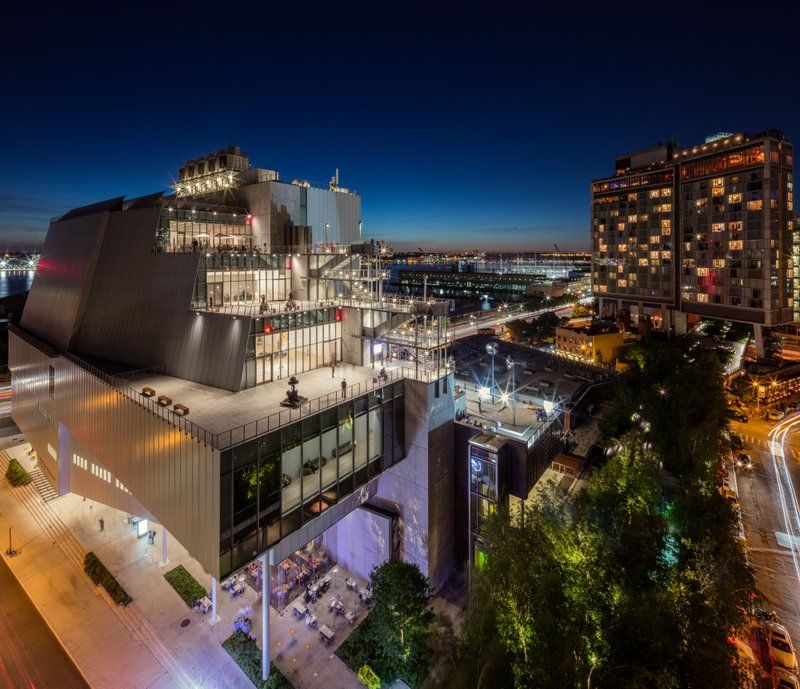
Photograph by Ben Gancsos ©2016 via Whitney Museum
The Whitney Museum has a policy not to sell artwork by a living artist in case it would negatively impact the artist’s career, but it has a policy in which works can be acquired through exchanges. This policy states that exchanges “may take the form of trading with a living artist or with the estate of an artist gallery or other source.”
Any works from the Permanent Collection that are to be acquired need to go through an intense deliberation with the Curatorial Committee. To add to that, the object being exchanged needs to be deaccessioned, or removed in an official capacity. The object coming in to replace the deaccessioned work needs to go through a heavy screening process by the Curatorial Committee, the Committee on Collection, and then ratified by the Board of Trustees in order to be approved.

Nighthawks by Edward Hopper. The Art Institute of Chicago, Friends of American Art Collection, 1942.51
The Museum has one of the largest collections of Edward Hopper works in the world. Two of his paintings, Cobb’s Bars, South Truro and Burly Cobb’s House, South Truro were lent to the White House in February of 2014 by the Whitney Museum. The two works are on temporary loan. The Whitney Museum also recreated Edward Hopper’s iconic work, Nighthawks, inside the prow of the Flatiron Building in 2013:
Next, check out the secrets of the Metropolitan Museum of Art.
Subscribe to our newsletter